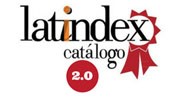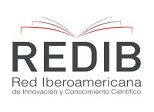Diversity of Orchids of the Deciduous and Evergreen Seasonal Forests in Manabí, EcuadorMariana de J.Mites Cadena
DOI:
https://doi.org/10.69890/hallazgos21.v3i2.278Keywords:
threatened orchids; orchidaceae; biodiversity; brassia; peristeria.Abstract
This study evaluates orchid diversity in two forests of the Ecuadorian coast, the lowland evergreen seasonal forest El Cerro and the deciduous lowland forest at Bahía de Caráquez, both in Manabí Province. Five transects of 50 x 20 mwere established in each forest where all seen fertile orchids were handpicked. Dominance was estimated by Simpson index (λ), diversity by Shannon-Wiener (H’) index, expected species by Chao 2 index, and similarity by Jaccard coefficients (J). In forest El Cerro, 423 orchids were collected, representing 21 species and 17 genera. Dominance was low (0.14) and general H’ was 2.34. Chao 2 estimator predicted a total richness of 39 species. The J estimator showed that similarity among transects was low (less than 40%). Transects were characterized by unique species. In spite of the dry environment, 16 orchids were found in the forest at Bahia de Caráquez, belonging to 4 species and 4 genera. Dominance was 0.3 and H’ was 1.3. Chao 2 predicted a total richness of 5 species. Three species were recorded for the first time for the Manabi Province: Aspasia psittacina, E. rhizomaniacum andPeristeria elata; Eight orchid species had some degree of threat and require special management plans for their conservation.
References
Atwood, J. T. (1986). The size of the Orchidaceae and the systematic distribution of epiphytic orchids. Selbyana, 9, 171-186.
Batygina, T., Bragi, E. & Vasilyeva,V. (2003). El sistema reproductivo y germinación de las orquídeas. Acta Biológica Cracoviensia, Series Botánica 45(2): 21-34.
Bonferroni, C. E. (1936). Teoría statistica delle classi e calcolo delle probabilità. Publicazioni del R Istituto Superiore di Scienze Economiche e Commerciali di Firenze.
Chao, A. (1984). Non-parametric estimation of the number of classes in a population. Scandinavian Journal of Statistics, 11, 265-270.
Chao, A. (1987). Estimating the population size for capture-recapture data with unequal catchability. Biometrics, 43, 783-791.
Dice, L. R. (1945). Measures of the Amount of Ecologic Association Between Species. Ecology, 26 (3), 297–302. doi:10.2307/1932409.
Dodson, C. (1999). Orchidaceae. In: P.M. Jørgensen & S. León-Yánez (eds.). Catalogue of the vascular plants of Ecuador(pp. 630-770). Monographs on Systematics Botany. Missouri Botanical Garden 75.
Dodson, C. (2001). Native Ecuadorian Orchids. Volume 2 (pp. 268- 297). Editorial Colina. Medellín, Colombia.
Dodson, C. (2002). Native Ecuadorian Orchids. Volume 3. Pp. 433-437. Dodson Trust, Sarasota, Florida.
Dodson, C. (2003). Native Ecuadorian Orchids. Volume 4. Pp. 732-735. Dodson Trust, Sarasota, Florida.
Dodson, C. & Escobar, R. (1994). Orquídeas Nativas del Ecuador (pp. 49-51). Editorial Colina. Medellín, Colombia.
Dodson, C. & Gentry, A. (1993). Extinción biológica en el Ecuador occidental. Pp. 27-60 En: P. A. Mena y L. Suárez (Eds.) Memorias del Simposio “La investigación para la conservación de la diversidad biológica en el Ecuador”. 10-12 June 1992, Quito.
Dressler, R. (1982). The Orchids. Natural History and Classification(pp. 2 – 8). Harvard University Press. Cambridge.
Endara, L. (2011). Orchidaceae. In: León-Yánez, S., R. Valencia, N. Pitman, L. Endara, C. Ulloa & H. Navarrete (eds.),Libro Rojo de las plantas endémicas del Ecuador, 2nd. Edition(pp. 441 – 702).Publicaciones del Herbario QCA, Pontificia Universidad Católica del Ecuador, Quito.
Gentry, A. & Dodson, C. (1987). Contribution of nontrees of a tropical rain forest. St. Louis. Biotropica19, 149-156
Hietz,P. & Hietz-seifert, U. (1995). Composition and ecology of vascular epiphyte communities along an altitudinal gradient in central Veracruz, Mexico. Journal of Vegetation Science 6: 487-498.
Hodgson, M. & Anderson, N. (1991). Orchids of the World(pp. 1-23). Charles Letts & Co. Ltd. London.
IUCN. 2012. Guidelines for Application of IUCN Red List Criteria at Regional and National Levels: Version 4.0.
Gland, Switzerland and Cambridge, UK.
Jaccard, P. (1901). Étude comparative de la distribution florale dans une portion des alpes et des jura.Bulletin de la Socíeté Vaudoise des Sciences Naturelles 37, 547-579.
Jacquemyn, H., Micheneau, C., Roberts, D. L. & Pailler, T. (2005). Elevational gradients of species diversity, breeding system and floral traits of orchid species on Reunion Island. Journal of Biogeography 32, 1751–1761.
Kindlmann, P. A. & Vergara, C. A. (2011). How uniform is species diversity in tropical forests? Lankesteriana 11(3), 269–274.
Krömer T., S. R. Gradsein &A. Acebey. 2007. Diversity and ecology of vascular epiphytes in natural montane forests and fallows of Bolivia. Ecología en Bolivia 42(1): 22-33.
Kuper, W., H. Kreft, J. Nieder, N. Koster &W. Barthlott (2004). Large-scale diversity patterns of vascular epiphytes in Neotropical montane rain forests. Journal of Biogeography 31, 1477–1487.
Ludwig, J. (1988). Statistical Ecology. A Primer on Methods and Computing(pp. 89-95). A Willey - Interscience Publication. New York.
Martínez-Meléndez N., Pérez-Ferrera, M. A. & Flores-Palacios, A. (2008). Vertical stratification in host preference by vascular epiphytes in a Chiapas, Mexico, cloud forest. Revista de Biología Tropical 56(4): 2069-2686.
McCormick, M. K., Taylor, D. L., Whigham, D. F. & O’neil, J. P. 2013. Distribution of orchid populations, a matter of fungi? Pp. 12 In: 31st. New Phytologist Symposium. Orchid symbioses: models for evolutionary ecology. 14-16 May 2013, Rende, Italy.
Ministerio del Ambiente. (2013). Modelo bioclimático para la representación cartográfica de ecosistemas del Ecuador continental. Quito, Ecuador.
Mites, M. (2001). Diversidad y taxonomía de orquídeas. Tesis Doctoral. Carrera de Biologìa, Universidad Central, Quito, Ecuador.
Mites, M. (2015). Catálogo de orquídeas. Bosque El Cerro, Chone, Manabí, Ecuador. Pontifica Universidad Católica del Ecuador, Portoviejo.
Moreno, C. E. (2001). Métodos para medir la biodiversidad (pp. 24 – 32). M&E Manual y Tesis SEA,Zaragoza.
Mulder, D &Mulder, T. (1990). Orchids travel by air(pp. 10-15). Printed by Knijnenberg, Krommenie, The Netherlands.
Orta Pozo, S &P. López Trabanco. 2013. Patterns which characterized the relationships host-orchid in the Biosphere Reserve “Sierra del Rosario”. Revista Científica Avances 15(3): 254-264.
Sanford, W. W. (1968). Distribution of epiphytic orchids in semi-deciduous tropical forests in southern Nigeria. Journal of Ecology 56(3): 697-705.
Shannon, C. E. & Weaver, W. (1948) A mathematical theory of communication. The Bell System Technical Journal, 27, 379–423 and 623–656.
Simpson, E.H. (1949). Measurement of diversity. Nature 163, 688. doi:10.1038/163688a0
Tupac, O. J. & Flanagan, N. S. (2013). Above ground orchid interactions: pollination and mycorrhizae in tropical epiphytic orchids. Pp. 17 In: 31st. New Phytologist Symposium. Orchid symbioses: models for evolutionary ecology. 14-16 May 2013, Rende, Italy.
Winkler, M., Hulber, K. & Hietz, P. (2009). Population dynamics of epiphytic orchids in a metapopulation context. Annals of Botany 104: 995-1004.
Downloads
Published
How to Cite
Issue
Section
License
Los artículos enviados a la Revista Científica Hallazgos21 deberán ser totalmente originales e inéditos.
Los autores son los responsables de los textos y las imágenes incluidas en los artículos y no necesariamente reflejan el pensamiento de la editorial o de la Pontificia Universidad Católica del Ecuador, Sede Esmeraldas (PUCESE).
Los autores disponen cederle a la Revista Científica Hallazgos21 todos los derechos inherentes para la edición, publicación y distribución o divulgación del mismo.
Se autoriza a las revistas firmantes de los acuerdos de Encuentros de Revistas Latinoamericanas para reproducir en parte o totalmente los artículos con la sola mención de la fuente claramente señalada.







